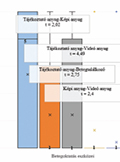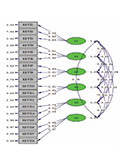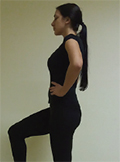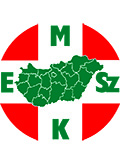The eLitMed.hu medical portal uses computer cookies for convenient operation. Detailed information can be found in the Cookie-policy.
Journal of Nursing Theory and Practice - 2018;31(03)
Content
[Survey of patient education among patients with hip arthroplasty]
[Aim of the study: To analyse the training level of patients underwent hip replacement therapy in different periods of their health care. Methods: Traumatology and orthopaedic departments, ambulances and musculoskeletal rehabi-litations took part in the research. A self-made questionnaire was distributed among doctors and health professionals who cured these patients directly. The received data was analysed with the IBM SPSS Statistics 20. program. ANOVA test, 2-sample T-test and Chi-squared test were applied to analyse the coherences. P<0,05 was defined as the value of the significance limit. Results: 86 health care professionals participated in the survey. The overwhelming majority of them (45%) reported that unstructured, postoperative patient education was characteristic. Their education was dominated by communication techniques (n=68), while among the instrumental methods the use of information leaflets was dominated (n=13). Their activity was limited by the time lag and work overload (76%). Analysing the training levels, it was found that information about lifestyle changes and post-operative mobilization was significantly underused. Conclusion: Significant insufficiency were found in the education of the patients in terms of organization, and in the teaching methods and topics which were further aggravated by the mentioned hindering factors. ]
[Nursing career of the high-school students]
[Aim of the research: The aim of the study is to analyze the trends of student orientation in the age and compulsory education process by age group. In our research, we would like to answer the question of how much „popularity” the health care profession as a professional area among students participating in Hungarian public education. If you feel this area of expertise close to you, what kind of vision you have. Research and sampling methods: A self-constructed questionnaire was administered during 24 Oct 2017 - 13 Jan 2018. In all counties of Hungary, the authors sent it to at least one of the training sites and filled up with me (N=329). These training sites are involved in healthcare training. Data were analysed with SPSS 15.0 for Windows statistical program. Chi square, Mann-Whitney tests were applied (p <0,05). Results: Out of the 159 people (48%), 170 (52%) in the family have healthcare workers. When performing the controls of the distributions, we can conclude that there is no significant difference in the distribution between the two groups, so there is the same number - that is, statistically significant difference - of the proportion of those willing to choose the health care path. In terms of career choice, 276 (86%) of respondents believe it is likely to be oriented towards the health care path, with 46 people (14%) planning their life is in another direction. Seven of its principal did not answer the question. By completing the Mann-Whitney test, we can conclude that there is no significant difference between the two groups in the medians, so there is no difference - that is, statistically significant difference - with respect to career choice as a nursing profession’s esteem. Of the 329 participants, 215 (65%) replied that they would like to work as a nurse, while 114 (35%) responded that they would not choose this job. Conclusion: Don’t influence significantly the career entrant if there is a healthcare worker in the family. Who stand in front of career choice don’t influence significantly the appreciation but is more motivated by sympathy and helplessness toward another person.]
Reliability and Validity of the Turkish Version of the Brief Scales for Coping Profile in Textile Workers
The aim of this study is to adapt the BSCP (Brief Scales for Coping Profile) scale to Turkish and to investigate its psychometric properties among textile workers. Methods: This a psychometric study with cross-sectional design. After translation procedures, the BSCP was administered to workers. Content validity of the BSCP was investigated with the CVI index and reliability was investigated with Cronbach’s Alpha. The construct validity was investigated with exploratory and confirmatory factor analysis. Results: The psychometric properties of the original BSCP were supported by the Turkish version of the BSCP. According to the exploratory factor analysis, the BSCP had six subscales. The reliability of the BSCP subscales’ values were 0.692, 0.712, 0.661, 0.756, 0.786, and 0.777 respectively. Conclusion: The Turkish version of the BSCP showed acceptable reliability and validity which is the first adapted scale in Turkey for evaluating workers’ coping profiles. The scale will be a good option to provide basic data about workers’ coping profiles which may be used for prolonging stress management skills and health promotion programs by occupational health and psychiatric nurses, physicians, psychologist and safety experts.
[The importance of the hand hygiene compliance development in the light of prevention of nosocomial infections]
[Good hand hygiene is the most effective means of preventing healthcare-associated infections, as contaminated hands are the greatest risk of spreading infections. It is critical that the infection control professionals emphasise the importance of good hand hygiene practices and help the health care professionals on the five steps of hand hygiene. The author presents in the case study that the numbers of positive urinary microbiological samples were decreased with systematic hand hygiene examination with direct methods and continuous feedback of experiences among the staff of the intensive care unit. For further development four sensory, alcoholic hand scrubbers with spraying automats were fitted by the management of the unit. Data obtained directly from observation further analysis is our goal a comprehensive study for the profession, which can serve as a positive example later to launch compliance development programs in other hospitals. ]
[The effect of sensory deficit induced by anterior crutiate ligament injury on postural control]
[The balance parameters and the loading symmetry was assessed in a subject with anterior cruciate ligament deficiency. A 14 days intensive training was performed mainly with eyes closed in closed kinematic chain exercises, loading the affected limb. Stabilometry and the assessment of loading symmetry was performed. The sway path was calculated in two direction. The sway path comparisons did not revealed significant differences only a tendency of decrease in anteroposterior direction. Interestingly we found an increased loading of the affected limb after our intensive training, with a mismatch between the subjective perceived symmetry and the objective symmetry data. The changed symmetry perception might be explained with the change in proprioceptive information processing induced by the training. In the future further examinations with higher case number are necessary to support this result. ]
1.
Clinical Neuroscience
[Headache registry in Szeged: Experiences regarding to migraine patients]2.
Clinical Neuroscience
[The new target population of stroke awareness campaign: Kindergarten students ]3.
Clinical Neuroscience
Is there any difference in mortality rates of atrial fibrillation detected before or after ischemic stroke?4.
Clinical Neuroscience
Factors influencing the level of stigma in Parkinson’s disease in western Turkey5.
Clinical Neuroscience
[The effects of demographic and clinical factors on the severity of poststroke aphasia]1.
2.
3.
4.
5.









